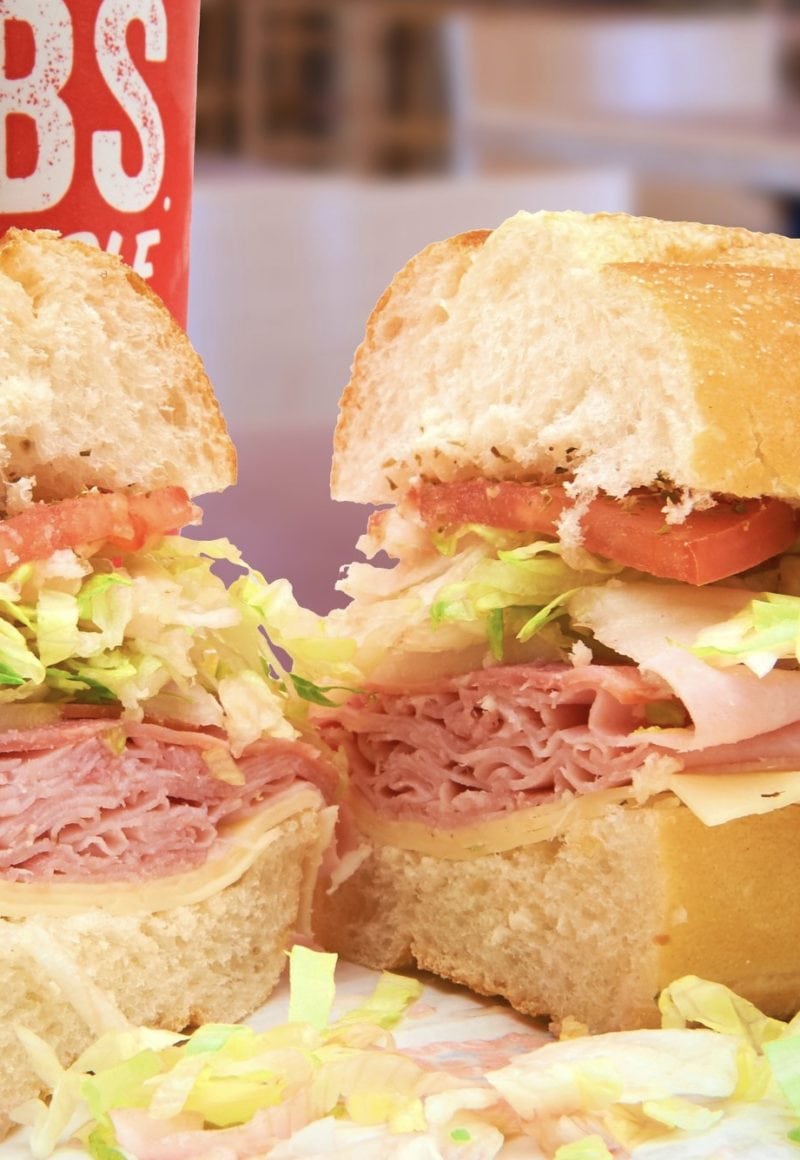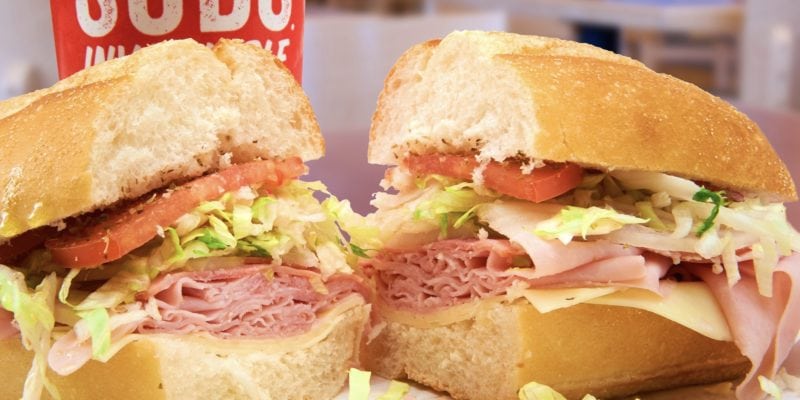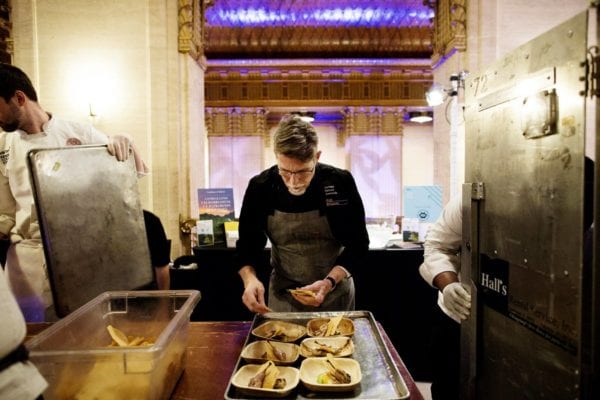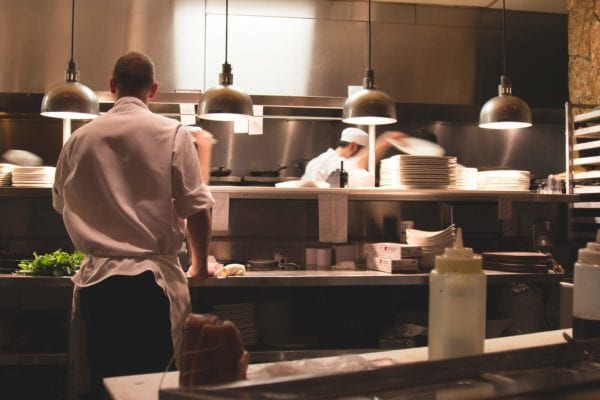Skift Take
As much as consumers and restaurant operators don't want to see higher prices, they do need to rise. In the end, this will benefit everyone.
— Jason Clampet
Your turkey sub may soon cost you a little more.
As minimum wage increases take hold across the U.S. — with Chicago and Los Angeles two of the latest big cities to implement hikes — restaurants may be among the hardest-hit businesses. They’re already facing reduced foot traffic and a worker shortage, and the rising labor costs could mean higher bills for that slowing trickle of diners.
“Ultimately what a lot of companies have to do is raise prices,” Bloomberg Intelligence analyst Jennifer Bartashus said of the wage increases. “That becomes a delicate balance — you can’t raise your prices too much because then you lose customers, and traffic is already under pressure.”
The federal minimum wage has been $7.25 since 2009, but state and local governments have enacted higher wage floors in recent years. Several states and cities did another round of hikes on July 1, putting even more pressure on local businesses. While higher wages mean more take-home pay for workers, they eat away at already razor-thin margins at restaurants, where some owners say they have no choice but to raise menu prices.
Bricks, in Chicago’s North Center neighborhood, will increase menu prices 10 percent in the next month, general manager Clayton Falwell said. The pizza and barbecue joint already raised prices on draft beef, switched to more efficient LED lighting and is running food inventory leaner — selling out of ribs on Sundays is OK now. But the higher wages mean menu prices have to keep up, he said.
“So many people are required in restaurants — you can’t computerize a guy that’s making your pizza or your salad,” Falwell said.
‘Catch 22’
The company’s skinny margins led owner Bill Brandt to shut a nearby sister eatery on July 1 after more than 20 years in business.
“It’s a catch-22,” said Falwell, who said he supports the city’s wage boost. He said his employees already make on average about 20 percent above the minimum wage. “While it is difficult to do business, people need that quality of life.”
Big U.S. chains are also feeling the pinch. Jack in the Box Inc., for example, raised prices on tacos in some California locations last month to make up for the 50-cent boost in the state’s minimum wage for large employers.
Starbucks Corp. recently bumped up the price of a drip coffee by 10 to 20 cents. Although the coffee giant didn’t attribute the increase to labor costs, Starbucks Chief Executive Officer Kevin Johnson said in a June interview that “increases in wage and occupancy, and other regulatory requirements” were making some of its urban stores unprofitable. The chain said it will close 150 company locations next fiscal year, compared with the 50 that it typically shuts annually.
‘Double Whammy’
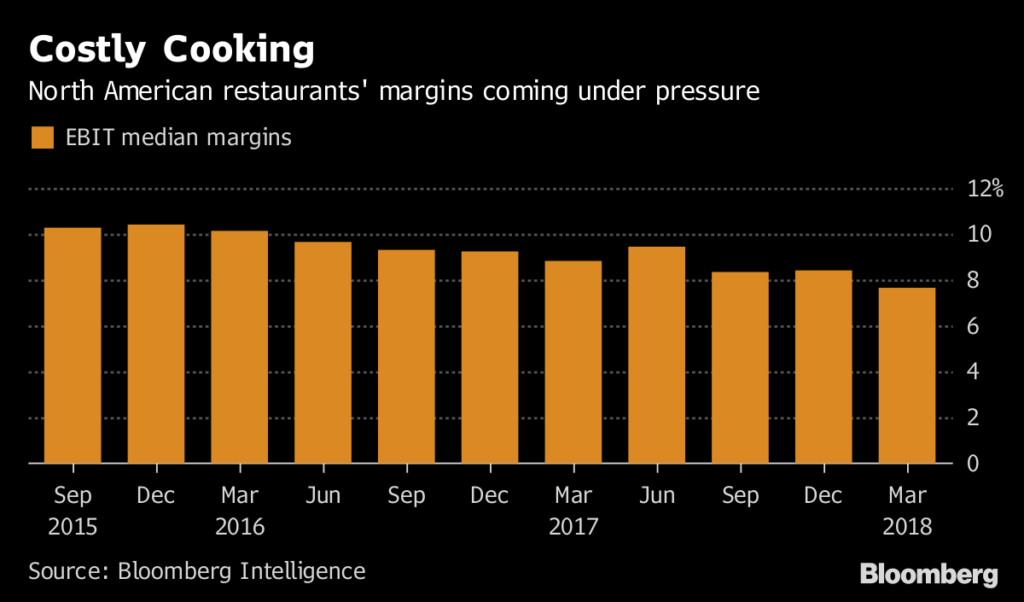
The higher labor costs come at a time when a dearth of low-wage workers extends across the country, leaving restaurants clamoring to find enough staff to grill burgers and build sandwiches. The jobless rate now stands at 3.8 percent, matching April 2000 as the lowest since 1969.
“It’s a bit of a double whammy,” Firehouse Subs CEO Don Fox said in an interview.
Firehouse Subs franchisees make their own pricing decisions and variations can be seen depending on location. The flagship turkey-and-ham Hook & Ladder sandwich goes for about $1.20 more in Southern California than in Jacksonville, Florida. To help ease rising labor costs, restaurants may look to push technology such as mobile apps and install more self-ordering kiosks, Fox said.
“Putting the order process into the hands of the customers is the low-hanging fruit,” he said.
That’s what Wendy’s Co. is doing. The burger chain, which expects labor expenses to be up as much as 4 percent this year, is adding kiosks to its restaurants as it looks to pare costs. About 300 have them now, and it’s trying out some lower-cost versions that sit on the counter. It’s also installing automated dishwashers.
Jersey Mike’s
Meantime, restaurants are desperate to attract diners. Traffic fell 1.2 percent in May, according to MillerPulse data. Earnings before interest and taxes have been on a downward spiral for eateries, with the median margin dropping to 7.6 percent as of the first quarter from more than 10 percent at the end of 2015, Bloomberg Intelligence data show.
In Chicago, Jersey Mike’s owner Dan Shanahan is leaving his sandwich prices alone for now even as he gives each of his 60 city employees a $1-per-hour raise, which will cost him between $1,200 and $1,600 a week. The Chicago hike, like many others, is just one step in years of planned increases.
Shanahan moved up Chicago menu prices by about 7 percent after a similar wage increase last year, he said, noting that the majority of his customers didn’t seem to mind — or even notice. In Chicago’s Loop, a Jersey Shore’s Favorite sub is $7.05 at the chain versus $6.65 in suburban locations.
“We’re just going to absorb it and see what happens,” said Shanahan, who owns four locations in Chicago and nine more in the suburbs. “We’re getting a fair price for our sandwiches right now.”
–With assistance from Uliana Pavlova.
©2018 Bloomberg L.P.
This article was written by Leslie Patton from Bloomberg and was legally licensed through the NewsCred publisher network. Please direct all licensing questions to [email protected].
![]()

